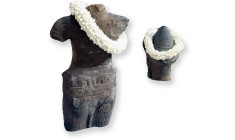Publications
The following is a reference list of academic publications written by members and Friends of the Trafficking Culture project. Publications are listed in reverse date order (i.e. newest at the top). Downloadable pdf files are present when available. Further details about these publications can be viewed by clicking on their respective titles. We ask that anyone using this material cites it appropriately.

Brodie, N. (2006) ‘Introduction: transforming values’, in N. Brodie, M. Kersel, C. Luke and K.W. Tubb (eds) Archaeology, Cultural Heritage, and the Antiquities Trade. Gainesville: University Press of Florida, pp. 1–24.

Brodie, N. (2006) ‘Iraq 1990–2004 and the London antiquities market’, in N. Brodie, M. Kersel, C. Luke and K.W. Tubb (eds) Archaeology, Cultural Heritage, and the Antiquities Trade. Gainesville: University Press of Florida, pp. 206–226.

Brodie, N. and Luke, C. (2006) ‘Conclusion: the social and cultural contexts of antiquities collecting’, in N. Brodie, M. Kersel, C. Luke and K.W. Tubb (eds) Archaeology, Cultural Heritage, and the Antiquities Trade. Gainesville: University Press of Florida, pp. 303–320.

Brodie, N. (2006) ‘An archaeologist’s view of the trade in unprovenanced antiquities’, in B. Hoffman (ed.) Art and Cultural Heritage Law for the Twenty-first Century: Policy and Practice. Cambridge: Cambridge University Press, pp. 52–63.

Brodie, N. (2006) ‘Smoke and mirrors’, in E. Robson, L. Treadwell and C. Gosden (eds) Who Owns Objects? Oxford: Oxbow, pp. 1–14.

Brodie, N. (2006) ‘The effect of an artefact’s provenance on its saleability’, Culture Without Context (19), pp. 4–7.

Brodie, N. (2006), ‘The lost, found, lost again and found again Gospel of Judas’, Culture Without Context (19), pp. 17-27.

Culture Without Context (2006) Issue 19. Cambridge: McDonald Institute for Archaeological Research.

Culture Without Context (2006) Issue 18. Cambridge: McDonald Institute for Archaeological Research.

Yates, D. (2006) ‘South America on the Block: The changing face of Pre-Columbian antiquities auctions in response to international law’. MPhil dissertation. University of Cambridge.

Mackenzie, S. (2006) ‘Psychosocial balance sheets: illicit purchase decisions in the antiquities market’, Current Issues in Criminal Justice.

Thomas, S. (2006) ‘Building bridges on Tyneside, June 2005’, Public Archaeology, 5(4), pp. 253–256.

Brodie, N. (2005) ‘A future for our past. Symposium for redefining the concept of cultural heritage’, International Journal of Cultural Property, 12, pp. 1–7.

Brodie, N. (2005), ‘Regulation of the trade in cultural objects. Historical and social perspectives’, Vanderbilt Journal of Transnational Law 38, pp. 1051–66.

Brodie, N. and Renfrew, C. (2005) ‘Looting and the world’s archaeological heritage: the inadequate response’, Annual Review of Anthropology, 34, pp. 343–361.

Brodie, N. (2005) ‘The circumstances and consequences of the British Library’s 1994 acquisition of some Kharosthi manuscript fragments’, Culture Without Context, 17, pp. 5–12.

Culture Without Context (2005) Issue 17. Cambridge: McDonald Institute for Archaeological Research.

Culture Without Context (2005) Issue 16. Cambridge: McDonald Institute for Archaeological Research.

Mackenzie, S. (2005) ‘Dig a bit deeper: law, regulation and the illicit antiquities market’, British Journal of Criminology, 45, pp. 249-268.

